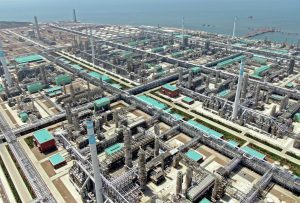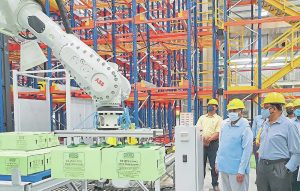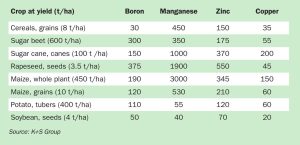
New Asian refining capacity
The refining industry continues to pivot towards Asia, with knock-on effects for sulphur output.

The refining industry continues to pivot towards Asia, with knock-on effects for sulphur output.

Intermittent supply from China due to export restrictions and US duty changes have kept markets guessing over the past couple of years, and there is no sign of that changing.

A look at the safety challenges that face developers of ammonia-powered shipping vessels before it can become used more widely as a low carbon fuel.

Indian producers have begun producing nanofertilizers at scale with the backing of the national government, as part of efforts to improve nutrient use efficiency, limit fertilizer subsidies and reduce fertilizer import dependency. But some scientists have questioned the claimed benefits and the overall efficacy of these novel crop nutrient products.

Levity Crop Science has a growing reputation as a leader in functional fertilizers, offering novel products that boost nitrogen and calcium efficiency and the crop uptake of micronutrients such as boron, molybdenum and silicon. This has culminated in the recent completion of a new research and development centre near Preston in the UK.

Dr Setareh Jamali Jaghdani and professor Jóska Gerendás of K+S Group outline how micronutrient management, by positively influencing plant physiology and development, helps maximise crop yields.

The production and use of nitrogen fertilizers are responsible for around five percent of global greenhouse gas (GHG) emissions. The fertilizer industry will need to drastically cut these emissions by 2050 as part of its contribution to the 1.5 °C global warming target. Yet around 48 percent of the global population rely on crops grown with nitrogen fertilizers. Guaranteeing food security, by continuing to supply affordable crop nutrients at scale, while transitioning to a low-carbon future, is therefore the collective challenge for the global fertilizer industry and world agriculture.

We highlight recent innovations, including fertilizers recovered from industrial residues, novel controlled-release coatings, and products that incorporate biological components designed to benefit both crop nutrition and soil heath.

The need for immediate climate action and cuts in carbon emissions has never been more urgent, especially in a world where ecosystems are increasingly under threat. The production of green fertilizers offers a clear route to achieving these goals by decreasing the chemical industry’s reliance on fossil fuels. Stamicarbon’s Carmen Perez, Rolf Postma and Nikolay Ketov outline the company’s innovative and integrated approach to green fertilizer technology.

Sulphur plays an important role in crop nutrition. Indeed, sulphur is increasingly being recognised as the fourth major crop nutrient alongside N, P and K. However, a combination of intensive agricultural practices, increasing application of high-analysis fertilizers and tighter air quality regulations has led to increasing sulphur deficiency in soils. In this insight article, CRU’s Peter Harrisson looks at what’s driving sulphur deficiency and whether there’s a gap in the market for sulphur fertilizers.